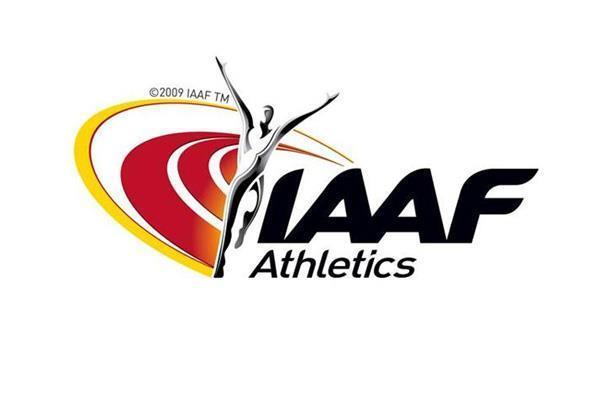Monaco, Aug 11, 2015: The IAAF’s long-term storage and retesting strategy concerning IAAF Championships which began in 2005 with the storage of anti-doping samples from that year’s IAAF World Championships in Helsinki has led to disciplinary action being commenced against a further 28 athletes following a second reanalysis.
In 2012, the IAAF conducted a first round of re-analysis of urine samples taken at the Helsinki World Championships which had been proactively stored by the IAAF at the Swiss Laboratory for Doping Analyses (LAD), the WADA-accredited laboratory in Lausanne, in anticipation of new scientific developments. This strategy first revealed six adverse findings from Helsinki which were announced in March 2013 and to date 9 athletes have been sanctioned following re-testing of samples from various world championships.
Beginning in April 2015, using the latest technology available in the field of anti-doping and taking advantage of the new World Anti-Doping Code’s provision extending from 8 to 10 years the period during which samples can be tested, the IAAF made a second reanalysis of Helsinki 2005 and Osaka
2007 samples. This reanalysis has confirmed a further 28 athletes with 32 adverse findings.
Due to the legal process, none of these athletes can be named yet.
A large majority of the 28 are retired, some are athletes who have already been sanctioned, and only very few remain active in sport. The IAAF is provisionally suspending them and can confirm that none of the athletes concerned will be competing in Beijing.
The IAAF embarked on this long-term storage and retesting strategy in 2005 to ensure that clean athletes are ultimately rewarded for their honest efforts in IAAF competitions. The IAAF is committed to use every means at its disposal within the World Anti-Doping Code to root out the cheats, however long it takes.
Martial Saugy, Associate Professor, PhD, Life Sciences, and Director of LAD commented:
“The latest scientific breakthroughs in anti-doping technology and analysis have been employed in the reanalysis of these samples to allow us to find previously undetectable substances. We are at the cutting edge of the fight against doping. In our 10-year partnership with the IAAF we have been using every scientific advance and legal opportunity at our disposal to catch the cheats. The IAAF and the IOC, working in cooperation with the LAD, clearly showed the way 10 years ago and other anti-doping organisations and sport federations, on WADA’s recommendation, are now considering or have started implementing such a retesting policy.”
BRIEFING NOTES:
The IAAF has worked tirelessly with the WADA-accredited laboratory in Lausanne to ensure the accuracy and speed of this process. The IAAF has taken advantage of the 10-year period now offered under IAAF Rules and the World Anti-Doping Code as well as new analytical techniques which allow for example the long-term detection of steroids.
This successful re-analysis, which commenced well before the recent criticisms of the IAAF anti-doping programme, confirms once again the extent to which the IAAF is willing to go in order to target and discover those who wish to cheat in our sport.
Regrettably, the testing science available to the IAAF and the entire anti-doping community was not sufficient to detect these substances at the time in 2005 and 2007. The science progressed significantly in the following 10 years, and the IAAF has taken full advantage of the new techniques available.
Ten years may seem like a long time to look backwards, but the IAAF has always strived to do whatever it can to protect clean athletes. If this means re-testing stored samples from previous events or out-of-competition testing, then the IAAF will do everything it takes to expose those who seek to cheat their fellow competitors.
The long-term storage and re-analysis of samples remain one of the best tools available to anti-doping organisations seeking to bridge the gap to athletes who make use of previously undetectable substances, or who have evaded detection through standard testing. The IAAF again urges other anti-doping organisations to follow this lead and re-analyse their stored samples.
The IAAF does not shy away from the fact that some athletes continue to cheat and defraud their fellow competitors. But we will do everything in our power, and use every tool available to protect those clean athletes who form the large majority of our sport.
Key points
• The re-analysis of these samples has been ongoing for some time, and was commenced well before the most recent allegations made against the IAAF by the ARD and The Sunday Times
• The findings reconfirm, yet again, the commitment of the IAAF to target and uncover all cheating in the sport, no matter how long it takes
• The re-analysis takes advantage of the increased statute of limitations (10 years) available under the 2015 World Anti-Doping Code
• The IAAF was among the first and only sports to systematically store targeted tests for later re-analysis. It urges all other sports and anti-doping organisations to take a similar approach and re-analyse their stored samples – or in many cases actually begin to store samples for re-analysis
• As part of its anti-doping strategy, the IAAF also keeps for long-term storage and re-analysis purposes samples taken out-of-competition from athletes from its priority group.
• None of the athletes involved will be competing in Beijing
• The IAAF will not be discussing the nationalities, names, or details of any athlete who has tested positive during the disciplinary process
• Should Anti-Doping Rule Violations be confirmed against these athletes, the IAAF will correct the record books and re-allocate medals as necessary
• Each athlete involved has been formally notified of the results and their respective Member Federations are now responsible for organising a hearing before the relevant tribunal. —- IAAF


Leave a Reply
You must be logged in to post a comment.